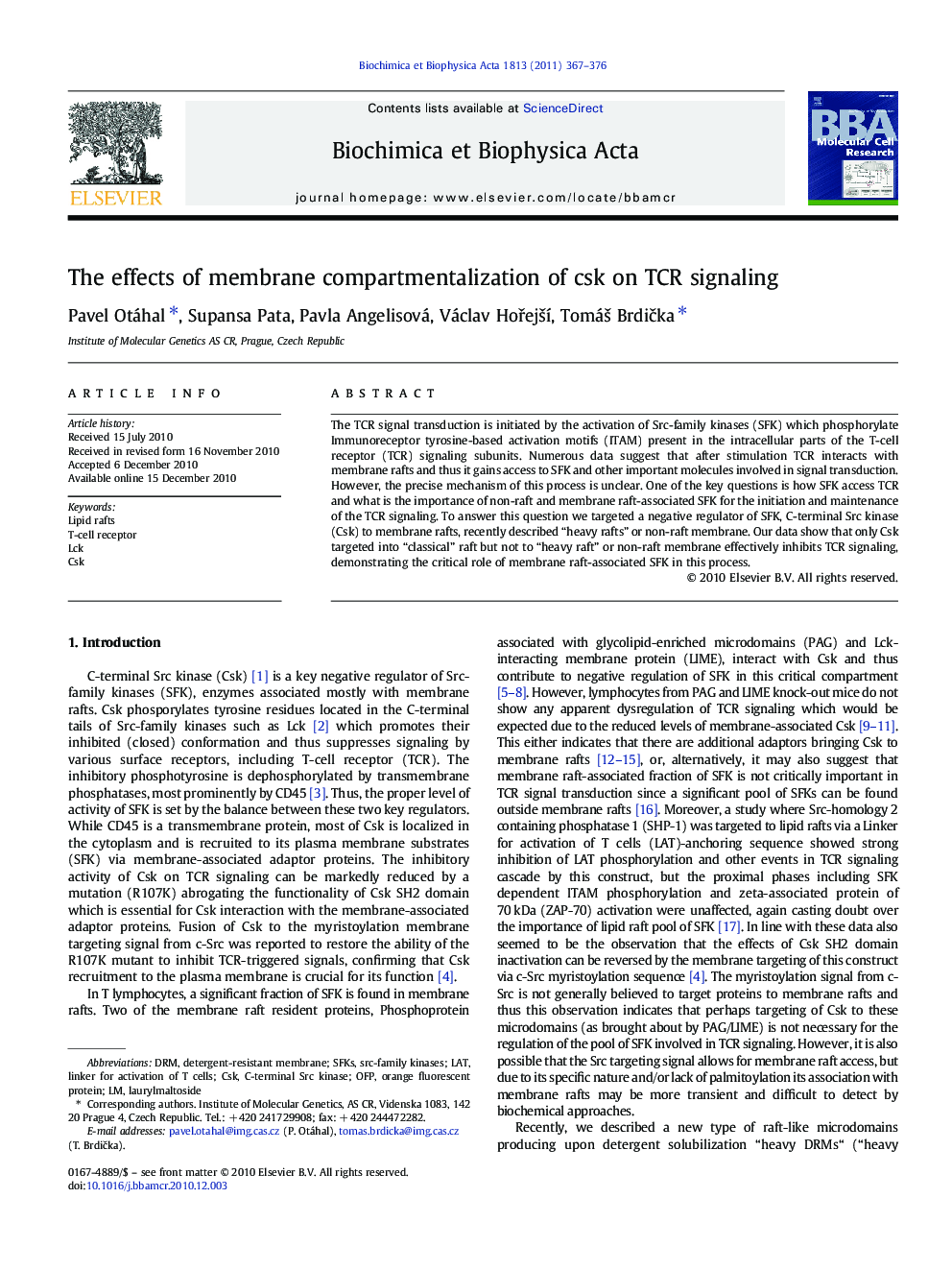| Article ID | Journal | Published Year | Pages | File Type |
|---|---|---|---|---|
| 1950849 | Biochimica et Biophysica Acta (BBA) - Molecular Cell Research | 2011 | 10 Pages |
The TCR signal transduction is initiated by the activation of Src-family kinases (SFK) which phosphorylate Immunoreceptor tyrosine-based activation motifs (ITAM) present in the intracellular parts of the T-cell receptor (TCR) signaling subunits. Numerous data suggest that after stimulation TCR interacts with membrane rafts and thus it gains access to SFK and other important molecules involved in signal transduction. However, the precise mechanism of this process is unclear. One of the key questions is how SFK access TCR and what is the importance of non-raft and membrane raft-associated SFK for the initiation and maintenance of the TCR signaling. To answer this question we targeted a negative regulator of SFK, C-terminal Src kinase (Csk) to membrane rafts, recently described “heavy rafts” or non-raft membrane. Our data show that only Csk targeted into “classical” raft but not to “heavy raft” or non-raft membrane effectively inhibits TCR signaling, demonstrating the critical role of membrane raft-associated SFK in this process.
Research highlights► Csk targeted to lipid rafts inhibits TCR signaling. ► Membrane raft-associated Src-family kinases play critical role in TCR signal transduction. ► Functional evidence for in vivo importance of membrane rafts.
